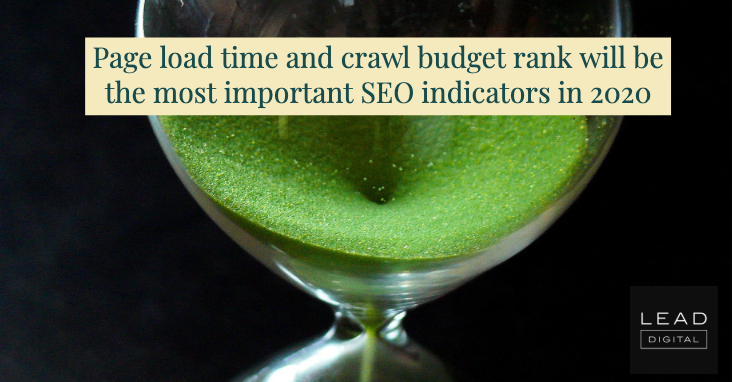 Based on my own testing, PLT and CBR are the technical aspects I believe will determine website success, or failure, in the new year.
Based on my own testing, PLT and CBR are the technical aspects I believe will determine website success, or failure, in the new year.
Google has the ability to impose its own rules on website owners, both in terms of content and transparency of information, as well as the technical quality. Because of this, the technical aspects I pay the most attention to now – and will do so next year – are the speed of websites in the context of different loading times I am calling PLT (Page Load Time).
Time to first byte (TTFB) is the server response time from sending the request until the first byte of information is sent. It demonstrates how a website works from the perspective of a server (database connection, information processing and data caching system, as well as DNS server performance). How do you check TTFB? The easiest way is to use one of the following tools:
- Developer tools in the Chrome browser
- WebPageTest
- Byte Check
Interpreting results
TTFB time below 100ms is an impressive result. In Google’s recommendations, TTFB time should not exceed 200ms. It is commonly adopted that the acceptable server response time calculated to receiving the first byte may not exceed 0.5s. Above this value, there may be problems on a server so correcting them will improve the indexation of a website.
Improving TTFB
1. Analyze the website by improving either the fragments of code responsible for resource-consuming database queries (e.g. multi-level joins) or heavy code loading the processor (e.g. generating on-the-fly complex tree data structures, such as category structure or preparing thumbnail images before displaying the view without the use of caching mechanisms).
2. Use a Content Delivery Network (CDN). This is the use of server networks scattered around the world which provide content such as CSS, JS files and photos from servers located closest to the person who wants to view a given website. Thanks to CDN, resources are not queued, as in the case of classic servers, and are downloaded almost in parallel. The implementation of CDN reduces TTFB time up to 50%.
3. If you use shared hosting, consider migrating to a VPS server with guaranteed resources such as memory or processor power, or a dedicated server. This ensures only you can influence the operation of a machine (or a virtual machine in the case of VPS). If something works slowly, the problems may be on your side, not necessarily the server.
4. Think about implementing caching systems. In the case of WordPress, you have many plugins to choose from, the implementation of which is not problematic, and the effects will be immediate. WP Super Cache and W3 Total Cache are the plugins I use most often. If you use dedicated solutions, consider Redis, Memcache or APC implementations that allow you to dump data to files or store them in RAM, which can increase the efficiency.
5. Enable HTTP/2 protocol or, if your server already has the feature, HTTP/3. Advantages in the form of speed are impressive.
DOM processing time
DOM processing time is the time to download all HTML code. The more effective the code, the less resources needed to load it. The smaller amount of resources needed to store a website in the search engine index improves speed and user satisfaction.
I am a fan of reducing the volume of HTML code by eliminating redundant HTML code and switching the generation of displayed elements on a website from HTML code to CSS. For example, I use the pseudo classes :before and :after, as well as removing images in the SVG format from HTML (those stored inside <svg> </svg>).
Page rendering time
Page rendering time of a website is affected by downloading graphic resources, as well as downloading and executing JS code.
Minification and compression of resources is a basic action that speeds up the rendering time of a website. Asynchronous photo loading, HTML minification, JavaScript code migration from HTML (one where the function bodies are directly included in the HTML) to external JavaScript files loaded asynchronously as needed. These activities demonstrate that it is good practice to load only the Javascript or CSS code that is needed on a current sub-page. For instance, if a user is on a product page, the browser does not have to load JavaScript code that will be used in the basket or in the panel of a logged-in user.
The more resources needing to be loaded, the more time the Google Bot must spend to handle the download of information concerning the content of the website. If we assume that each website has a maximum number/maximum duration of Google Bot visits – which ends with indexing the content – the fewer pages we will be able to be sent to the search engine index during that time.
Crawl Budget Rank
The final issue requires more attention. Crawl budget significantly influences the way Google Bot indexes content on a website. To understand how it works and what the crawl budget is, I use a concept called CBR (Crawl Budget Rank) to assess the transparency of the website structure.
If Google Bot finds duplicate versions of the same content on a website, our CBR decreases. We know this in two ways: – Read more



